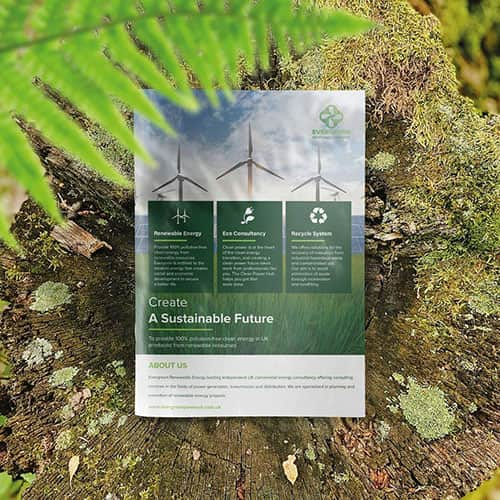Creating a user-friendly website design in 2025 is no longer just about visual appeal. It’s about providing a rich, seamless experience that caters to all users, regardless of device, ability, or intent.
At Printingprogress, we understand the evolving needs and expectations in the digital landscape. As businesses and consumers become more digitally savvy, a website must prioritise not just aesthetics but accessibility, inclusivity, and performance too.
Ready to modernise your digital experience? Contact us today on 0800 999 1094 or send your queries to info@printingprogress.co.uk.
A truly user-friendly website design in 2025 ensures every visitor feels valued, informed, and empowered to take action. Your digital presence should drive results, reflect your brand, and make every interaction effortless—because customer experience is everything.
Why User-Friendly Website Design Matters More Than Ever
The web is now the first touchpoint for most customers. A user-friendly website design in 2025 directly influences bounce rate, engagement, and conversion. When visitors enjoy a smooth and intuitive user experience (UX), they’re more likely to trust your brand and take that crucial next step—whether it’s a purchase, sign-up, or phone call.
In a world where competition is fierce, your website is your 24/7 brand ambassador. If it’s clunky or confusing, users will leave within seconds.
Modern UX Design Trends Defining 2025
Staying ahead means embracing modern UX design trends that marry visual innovation with practical functionality.
- Inclusive design: Building websites that everyone can use, including people with disabilities, is now both a legal and ethical obligation.
- Mobile-first design principles: With mobile usage dominating, responsive layouts are essential for reaching on-the-go users.
- Intuitive website navigation: Easy-to-follow structures—clear menus, sticky navigation, logical flows—make browsing effortless.
- Immersive micro-interactions: Subtle animations, feedback on clicks, and dynamic scrolling add delight without distraction.
- Visual hierarchy: Content is prioritised using size, colour, and spacing so visitors know where to focus.
Our commitment to user-focused web design ensures your online presence stands out for all the right reasons.
Accessibility In Web Design: A Non-Negotiable Standard
With Web Accessibility Standards 2025 (including WCAG 2.2) and national legislation now enforcing inclusion, accessible design isn’t optional—it’s essential. Features such as keyboard navigation, screen reader optimisation, and strong colour contrast ensure every visitor, regardless of their ability, can engage with your content.
- Colour and contrast: Maintain the recommended 4.5:1 ratio for text.
- Semantic HTML: Use proper tags for structure so assistive technology can interpret content accurately.
- Keyboard accessibility: Ensure users can navigate without a mouse.
- Alternative text for images: Descriptive text helps those using screen readers.
At Printingprogress, we bring accessibility best practices into every project—ensuring compliance and providing an inclusive experience for all.
Embracing Mobile-First And Fast-Loading Website Design
Mobile responsiveness is at the heart of website success today. A mobile-first design approach focuses on the needs and context of mobile users before scaling for desktops. This ensures content adapts smoothly to any device.
Additionally, fast load times are critical. According to Core Web Vitals, factors such as Largest Contentful Paint (LCP), Cumulative Layout Shift (CLS), and Interaction to Next Paint (INP) must be optimised to keep users—and search engines—happy.
Simple steps to boost load speed:
- Optimise images and videos for quick loading.
- Minimise code and leverage browser caching.
- Use lightweight frameworks and hosting.
A mobile app design and development approach can further broaden your reach, enhancing user engagement on every platform.
Implementing UI Design Best Practices For Engagement
We believe UI design best practices drive real results. Here’s what to prioritise:
- Consistency: Uniform styles, colours, and button behaviours across all pages reduce friction.
- Simplicity: Less clutter means more focus. Every element should have a clear purpose.
- Clear calls to action (CTAs): Guide users towards actions that matter, such as contacting you, making a purchase, or signing up for a newsletter.
Explore bespoke software to enhance UX and add features tailored to how your audience actually behaves and what they value.
User-Centred Design Approach: Putting People First
A user-centred design approach shapes every project we tackle. We invest in user research, build detailed personas, and gather feedback through testing. This allows us to reduce bounce rates, enhance overall user experience, and meet real-world needs.
Through iterative design and user testing, we ensure your website evolves with changing expectations—keeping people, not just pixels, at the core.
Website Usability Best Practices & Web Accessibility Standards In 2025
To excel in website usability best practices:
- Prioritise clarity and ease of use in every element.
- Use intuitive website navigation to guide users naturally.
- Regularly test usability with tools like Google PageSpeed Insights, Lighthouse, and user session recording.
- Adhere strictly to the latest web accessibility standards 2025, guaranteeing compliance and protection against legal risks.
We can also recommend bespoke CRM tools for better engagement to track, nurture, and support your customers seamlessly.
Load Speed Optimisation & Core Web Vitals For 2025
Load speed is now a leading ranking factor and a core user expectation. By optimising for Core Web Vitals—LCP, CLS, and INP—your site will be smooth, fast, and visually stable. Every improvement boosts engagement, reduces bounce rate, and enhances satisfaction.
CONTACT PRINTINGPROGRESS
How To Design A Website That Users Love In 2025
- Understand your audience with in-depth user research.
- Adopt a human-centred design mindset.
- Audit your site for accessibility and inclusivity.
- Streamline content and navigation for clarity.
- Continuously monitor engagement and make data-driven changes.
Conclusion: Take Action Today
A user-friendly website design in 2025 is your key to thriving in the digital era. At Printingprogress, we combine creativity, technical excellence, and an unwavering focus on users to craft websites people love to use. Future-proof your digital presence and see the difference in your conversions, retention, and brand trust.
Ready to begin? Call us on 0800 999 1094 or email info@printingprogress.co.uk to get started.
Frequently Asked Questions
What are the top features of a user-friendly website in 2025?
A clear visual hierarchy, intuitive navigation, fast load times, full accessibility, responsive design, consistency in UI, and compelling, user-centred content.
Why is accessibility important in website design?
Accessibility ensures every user—including those with disabilities—can interact with your site. It is vital for inclusivity, legal compliance, improved SEO, and reaching a broader audience.
What tools can I use to test website usability in 2025?
Popular options include Google PageSpeed Insights, Lighthouse, the Web Vitals Chrome Extension, Hotjar, UserTesting, and WAVE by WebAIM for accessibility.
How can fast load times improve the user experience on my site?
Faster sites reduce bounce rates, enhance engagement, improve SEO rankings, and increase conversions by keeping visitors satisfied and active on the site.
What are common mistakes that hurt website usability?
Cluttered layouts, inconsistent navigation, poor mobile optimisation, lack of accessibility, slow load speeds, confusing content, and ignoring user feedback are the most harmful mistakes.


 Eco friendly, sustainably sourced recycled FCS certified print
Eco friendly, sustainably sourced recycled FCS certified print Takeaway Screens
Takeaway Screens Postal Boxes
Postal Boxes